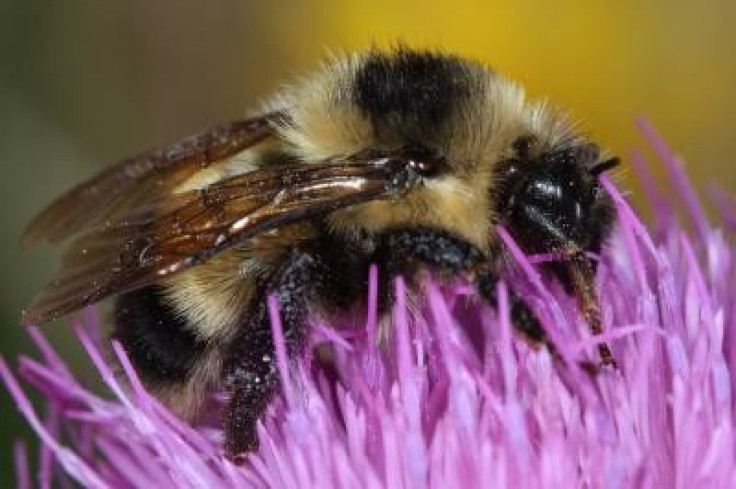Elusive Cockerell's Bumblebee, Last Seen in 1956, Rediscovered in New Mexico

An elusive bumblebee last seen in the United States in 1956 was recently rediscovered in New Mexico.
A team of scientists from the University of California, Riverside announced Monday the rediscovery of the bee, known as the Cockerell's bumblebee, in the White Mountains of south-central New Mexico.
Cockerell's is the rarest species of bumblebee in the U.S. and was first described in 1913 based on six specimens that were collected along the Rio Ruidoso, which is a river located in the Sierra Blanca and Sacramento Mountains, N.M.
Another 16 specimens were collected near the town of Cloudcroft, N.M., and one more from Ruidoso (1956), according to a press release.
Most bumblebees in the U.S. are known from dozens to thousands of specimens, but not this species, Douglas Yanega, senior museum scientist at U.C. Riverside, noted in a press statement. The area it occurs in is infrequently visited by entomologists, and the species has long been ignored because it was thought that it was not actually a genuine species, but only a regional color variant of another well-known species.
The U.C. Riverside team found three samples of the bee species among weeds along a highway north of Cloudcroft and recorded the specimens on Aug. 31, Live Science reported.
Yanega also said there are approximately 50 species of native U.S. bumblebees, which include some that are nearly extinct. The species known as Franklin's Bumblebee is one example. It was seen once since 2003, a press release stated.
The Franklin's Bumblebee species is known for a distribution that covers about 13,000 square miles. In comparison, the Cockerell's Bumblebee has the most limited range of any bumblebee species in the world, as it has been spotted in an area of less than 300 square miles.
When an insect species is very rare, or highly localized, it can fairly easily escape detection for very long periods of time, Yanega said. He added that Cockerell's bumblebee went undetected for so long because the area where it lives is rarely visited by entomologists.
Yanega also said it was believed that this species of bumblebee was not actually a genuine species, but only a regional color variant of another well-known species.
UCR entomologists rediscover lost insect species and discover new ones at the rate of several dozen species every year. These species are usually in groups such as bees, wasps, beetles and plant bugs.
The pace of species discovery and description is incredibly slow because there are so few insect taxonomists relative to the number of undescribed insects, Yanega said. Moreover, the work is painstaking, time-consuming, and not very glamorous, at least in the public's perception, when compared to studying things like dinosaurs.
© Copyright IBTimes 2024. All rights reserved.












